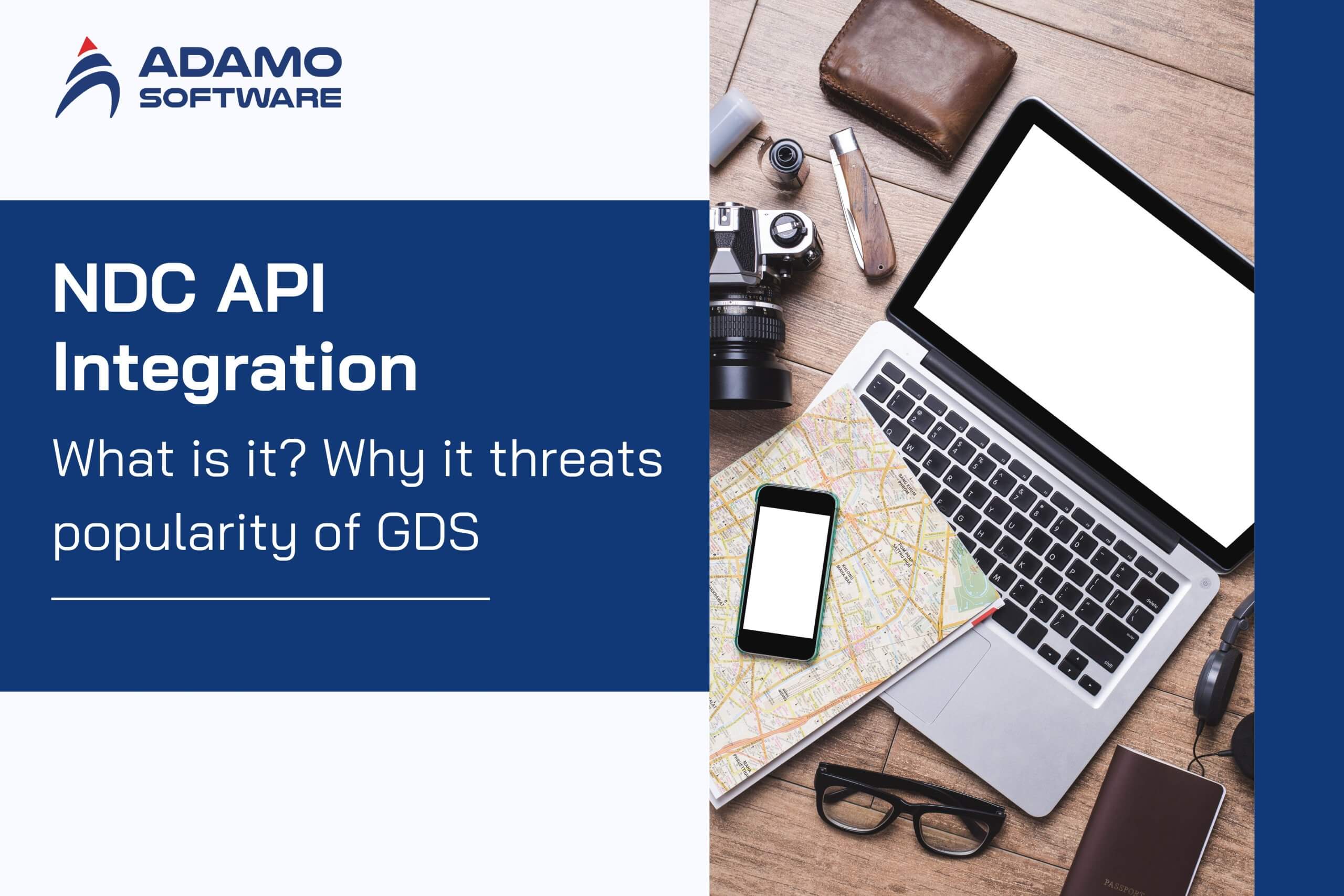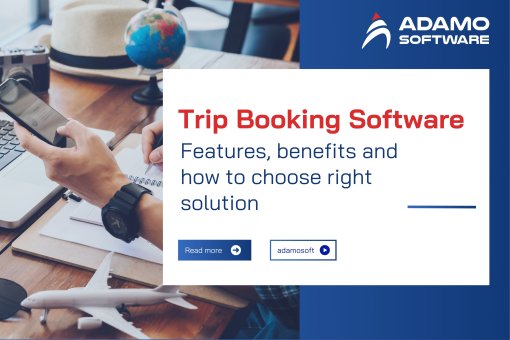NDC API Integration: What is it? Why it threats popularity of GDS

NDC (New Distribution Capability) API integration is fast becoming a game changer in the rapidly evolving travel industry. What is NDC API integration, and why is it getting so popular right now?
NDC API integration allows airlines to offer their products and services directly through an interface standardized for travel agents and customers. This innovation makes the booking experience richer in terms of its content and more personalized. However, as more airlines embrace NDC API integration, the traditional and widely used Global Distribution Systems (GDS) will risk losing dominance.
In this article, we’ll discuss the basics of NDC API integration, its advantages, drawbacks, and key considerations when implementing it. Let’s learn how NDC API integration is changing the way airline bookings are made.
I. What is NDC API Integration?
In 2012, IATA developed a new distribution capability, the XML standard, called NDC or New Distribution Capability. With this, airlines can offer their passengers rich content and extra services such as luggage, seat, and class selection. Essentially, airlines need this rich content to stay competitive and to create a special brand image.
Real-time flight inventory can be accessed through NDC API integration solutions. With its NDC API integration, companies can book faster and better serve customers with advanced features and functions. NDC is an excellent platform for effective pricing strategy as it allows passenger data to be collected. Until recently, GDSs had been using the UN rules, called EDIFACT, for data interchange. NDC is replacing the EDIFACT protocol now. EDIFACT has been used by GDSs since 1980, but NDC API integration opens new opportunities.
The contemporary NDC protocol employs XML standards to outline the comprehensive content and supplementary services offered to OTAs, GDSs, and destination management firms. This content is then disseminated down the line to GDS passengers or member agents.
NDC is a dynamic tool for the industry because of the flexibility of XML. The airline passenger service systems, GDSs, and NDC interfaces are based on XML as the communication foundation. Among the latest tools for managing rich content interchange, REST APIs allow travel companies to access airline data in JSON format.
By incorporating the NDC API with airlines, the functionality of flight reservation software will be significantly enhanced. For instance, NDC API integration provides travel companies with a wide range of flight content. It also allows for real-time availability and bookings and ultimately leaves the customer experience seamlessly smooth. Ultimately, NDC API integration into the flight reservation systems is enhancing process standardization and revenue opportunities for airlines and travel companies.
II. Main advantages of NDC API Integration

1. Improved personalization and customer data access
In today’s environment, airlines receive only very limited passenger information. Online travel agencies, Global Distribution Systems (GDSs), and tour operators hold most of the relevant data. Without comprehensive info, airlines cannot achieve a truly personalized booking experience.
This is why airlines struggle to understand what their customers care about. Often, they struggle to deliver their services in a way that is most beneficial for their customers. This makes it easy to miss an opportunity to engage and delight the customer.
However, NDC API integration has made this scenario much better. Airline access to detailed consumer information is provided through the NDC communication protocol. Airlines can use this access to enhanced data to better analyze customers’ behavior and preferences.
Hence, airlines have the opportunity to better serve individual travelers through tailored offers and services by being able to better understand their customers. Not only does this improve the customer experience, but it also strengthens loyalty. That’s because passengers now feel their needs and demands are met with personalized attention.
2. Competitive advantage through unique offerings
Airlines are limited in their capabilities when using traditional GDS software. While it can be used to show fares and schedules, it does not permit the addition of other value-added services.
This means travel corporations still keep control over pricing and content presentation under this restriction. As a result, airlines are rarely able to exhibit rich assets to reinforce their competitive position in the market.
Therefore, airlines cannot differentiate themselves from their competitors. Also, they may struggle to pull in customers who are looking for some unique travel experiences.
The challenge is addressed by NDC API integration, giving airlines more flexibility and control over their product offerings. NDC allows airlines to create unique selling propositions (USPs) about their offering that are distinct from other airlines.
They can come up with innovative packages that combine flights with ancillary services, such as flights with baggage options or even seat selection. It’s this ability to innovate that allows airlines to compete in a crowded business and attract more customers. This is especially useful for customers looking for tailor-made travel experiences that personalize their needs and preferences.
3. Flexibility in content and pricing
Airlines can offer their customers flexible pricing options thanks to personalized shopping experiences. In the past, airlines depended on the Airline Tariff Publishing Corporation (ATPCO) to set their charges. Third-party involvement, however, reduces airlines’ profit margins and curtails their ability to provide tailored pricing. That’s why NDC API integration becomes important. Airlines can take advantage of this by creating personalized pricing and vacation packages based on different passenger data points.
Airlines can simply adopt modern XML standards to develop their APIs quickly. It provides this flexibility to the airline to change the pricing structure. This allows them to offer customized offers to each of their customers depending on the interactions of their previous customers with the airline. This is not only a way to make customers happy but also a way to get loyal users and repeat business.
4. Expanded services, special offers, and major discounts
Nowadays, EDIFACT (Electronic Data Interchange for Administration, Commerce, and Transport) is used as the industry standard by airlines. The standard allows for the ability to exchange documents and information within different industries and countries and for data handling consistently. EDIFACT supplies a framework for communication, but it ties the hands of the airlines when it comes to additional services. For example, basic fare displays are all they can display, and cannot offer personalized packages or special ones different for every individual traveler.
Breaking free from these constraints with NDC API integration is a great choice for airlines. They can create and promote more services with this technology, including special deals and custom holiday packages. For example, airlines can entice customers towards buying bundled flights with hotel stays or exclusive discounts to loyal customers. With NDC API integration, the airlines can inject their products into the sales process. This will make the products more appealing to the consumer and thus increase sales and boost customer satisfaction.
5. Enhanced Reliability
Usually, Airlines use Passenger Service Systems (PSS) to provide and display vital booking information such as pricing and flight schedules. While PSS can display seat availability and other essential data, it cannot get real-time updates due to system limitations. The lag in this can cause discrepancies between what customers are seeing and can be frustrating for everyone involved during the process of booking.
This reliability issue is tackled by the NDC API integration, which provides an airline with a more robust solution. This technology also updates all services, fares, and schedules in real time, so passengers get the most up-to-date information possible.
It isn’t just about making the booking easier, it is also about eliminating errors or misunderstandings due to the immediate reflection of data. Hence, travelers tend to book their flights in a more convenient and more enjoyable way. This also increases trust in the airlines’ services and increases the customer retention rate.
Also read: GDS vs NDC: A Clash of Traditional and Modern Approaches
III. Drawbacks of NDC Integration

1. Lack of Universal Standards
The lack of universal standards is one of the big downsides of NDC integration. NDC API is meant to standardize the communication between the airlines, the travel agents, and the customers. However, implementation takes very different forms across the industry.
There is no standard, and so each airline is free to interpret (and potentially deploy) the standards in different ways. As a result, software providers face integration problems since there are many connecting channels.
Without a common framework, compatibility problems can exist between NDC implementations and existing passenger management systems. Thus, travel agents and airlines have to do extra work to keep track of bookings and transactions. That defeats the purpose of NDC and its promise of efficiency and customer service improvements.
2. Resistance from Travel Agents and Aggregators
NDC API integration is a strong drawback because travel agents and aggregators resist it. It’s no secret that travel professionals are very entrenched in their current Global Distribution System (GDS) workflows that they have been utilizing for years. It breeds a comfort zone, which makes them reticent to leave this behind and adopt new technologies such as NDC.
Because of this, transitioning to NDC often means substantial investment, including upfront costs for new software, staff training, and changing existing business models. These changes can be very overwhelming and extremely expensive for many smaller agencies.
Moreover, they anticipate operational disruptions during the transition period and the associated loss of revenue and customer dissatisfaction. However, the reluctance to adopt NDC results in significantly slower overall implementation of the industry. Hence, it can harm the potential of NDC to transform the airline distribution landscape.
Travel agents can be left behind without the innovative features and efficiency that NDC brings. This will render them less able to compete effectively in a fast-changing marketplace.
3. Perceived as a Premium Addition
Another challenge to NDC uptake is that it is perceived as a premium, rather than a necessity, addition. The airline and travel agency stakeholders see NDC integration as an add-on, an optional enhancement, not a must-have upgrade.
The current effectiveness of the existing systems, however, has developed this mindset to a large extent. Specifically, the existing systems are still able to meet the basic operational requirements less substantially with minor alterations or investments. As a result, airlines and travel agencies have no urgency to adopt NDC while they can do it with their current GDS systems.
This perception discourages stakeholders from investing in resources for implementation and thereby weakens the potential benefits of NDC API integration. A transition without a clear understanding of how NDC can improve customer experience, streamline operations, and generate competitive advantages, could mean little to many airlines.
This reluctance limits the growth of NDC. It also prevents airlines from fully leveraging their capabilities to improve service offerings and operational efficiency in an increasingly competitive market.
IV. Key considerations for travel agents when implementing NDC API integration

1. Compliance with NDC standards
For travel agents to be able to use NDC API integration, they must ensure their technology provider meets IATA’s modern NDC standards. These standards are critical because they make it easy for different industry player to work together and exchange data.
NDC APIs will work as intended with existing systems used by airlines, GDSs, and other travel service providers, provided that compliance is guaranteed. Without compliance, travel agents may face integration problems that could delay travel operations and prevent travel agents from delivering customers with timely and accurate information.
Therefore, travel agents should confirm that the technology provider they choose is duly certified and adheres to updated NDC guidelines. This is the first most important step to ensure the NDC API integration process is smooth.
2. Data security and privacy
Travel agents handle sensitive customer information such as personal details and payment data. So, upon integration of NDC APIs into your business, data security becomes a paramount concern. Agents need to truly scrutinize the tech provider’s security approaches. For example, look into the data encryption protocols and their compliance with relevant data protection regulations (e.g., GDPR).
Integrating NDC API requires having a strong way to secure customer data from breaches and unauthorized access. Additionally, travel agents should ask how the technology provider handles data privacy and customer consent for data use.
Protecting customers means the travel agency has to ensure that the technology provider prioritizes data security. This also helps build the trust of the travel agency’s brand. Taking such precautions will shield travel agents against the risk of data handling during NDC API integration and provide compliance with legal obligations.
3. Experience and expertise
Travel agents should first choose a technology provider with good experience and expertise in NDC API integration. Those that have successfully implemented NDC solutions for various travel agencies are the ones to look for when considering a provider.
This experience demonstrates a level of intimate industry standards and technical ability to span the integration of NDC APIs. Additionally, the chosen provider should be familiar with the special challenges of the travel agency business. For instance, they should know how to deal with multiple customer needs and adapt quickly to market changes.
The provider may not have enough example projects to apply. Therefore, it is possible to gain insights by evaluating case studies or testimonials from former clients regarding NDC API integration. All in all, travel agents can improve their chances of a successful implementation by partnering with an experienced technology provider.
4. Robust API infrastructure
They must carefully consider the technology provider’s infrastructure. This infrastructure must be sufficient to meet the demands of NDC API integration. A good API should allow high-volume data and transaction throughput without losing performance in response to peak usage spikes.
The scalability features are important because the system has to be able to grow with the agency’s growing needs without sacrificing functionality. Moreover, security is also required to take place with the NDC API to protect sensitive information that is used in transactions with the API.
As with most things, the API must also be available on high-availability terms. It must be reliable enough to have a minimum amount of downtime and service disruptions. Travel agents should select a technology provider with a strong API infrastructure. This ensures responsive systems for a smooth booking experience. It also maximizes operational efficiency through optimal NDC API integration.
V. Final thoughts

In conclusion, NDC API integration revolutionizes the travel industry by furnishing airlines and travel agencies with a powerful alternative to conventional GDS systems. With this innovative technology, airlines can showcase their special offerings and provide a richer content distribution. But, despite the advantages of implementing NDC, there are also challenges to look out for when implementing NDC API integration.
At Adamo Software we are ready to assist businesses in navigating these complexities. Our experience in NDC API integration allows us to provide a tailored solution. This ensures that we offer the best possible solutions with the use of this new technology. Partnering with Adamo means you can make the transition to NDC go as smoothly as possible. This allows your organization to continue to succeed in today’s competitive markets.
If you’d like to start using NDC to strengthen your travel services, contact Adamo Software now!











